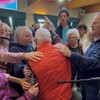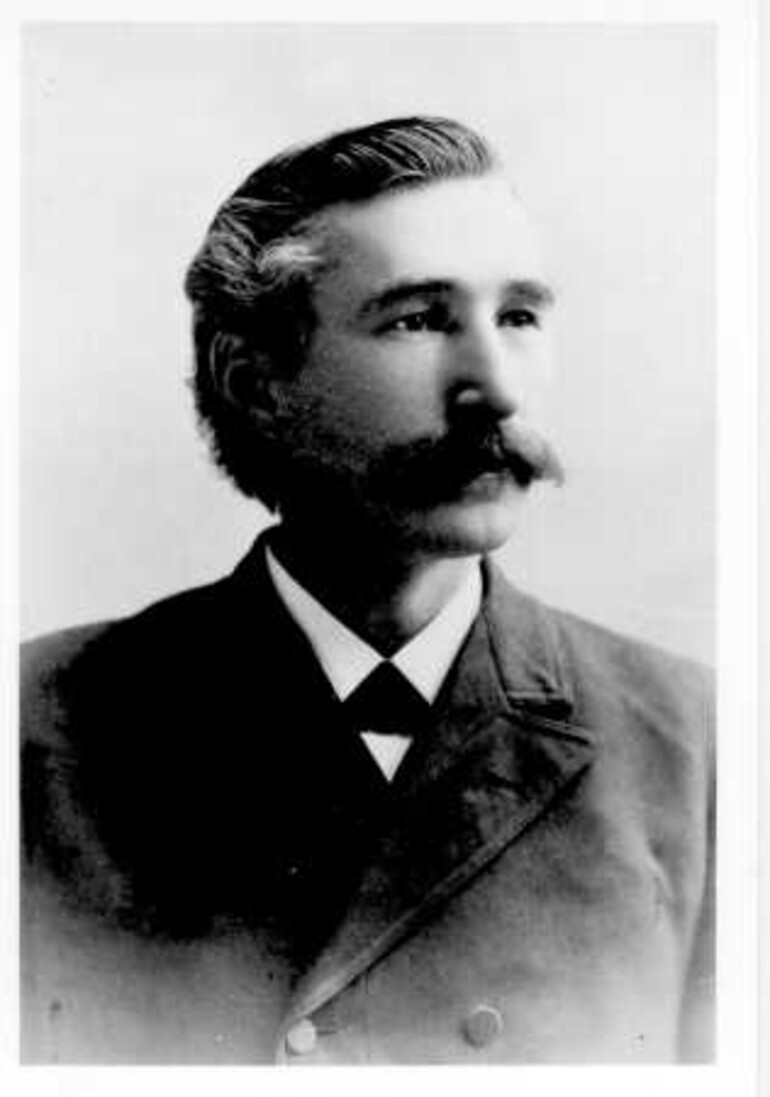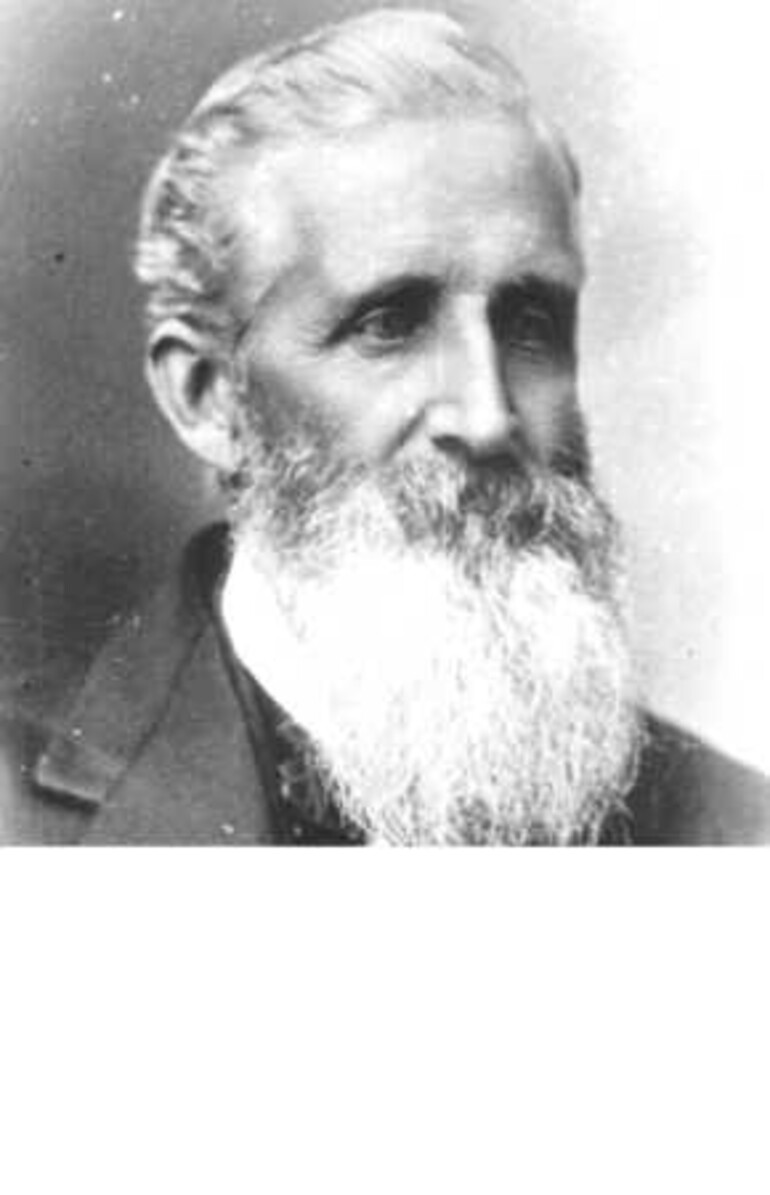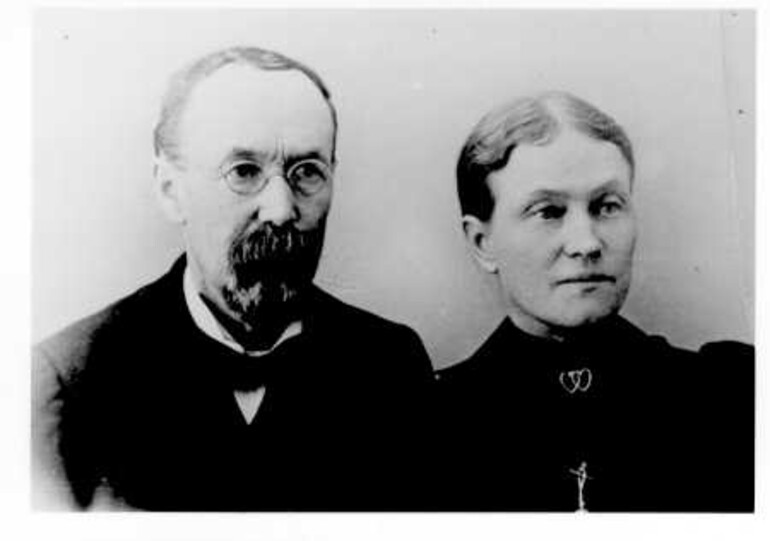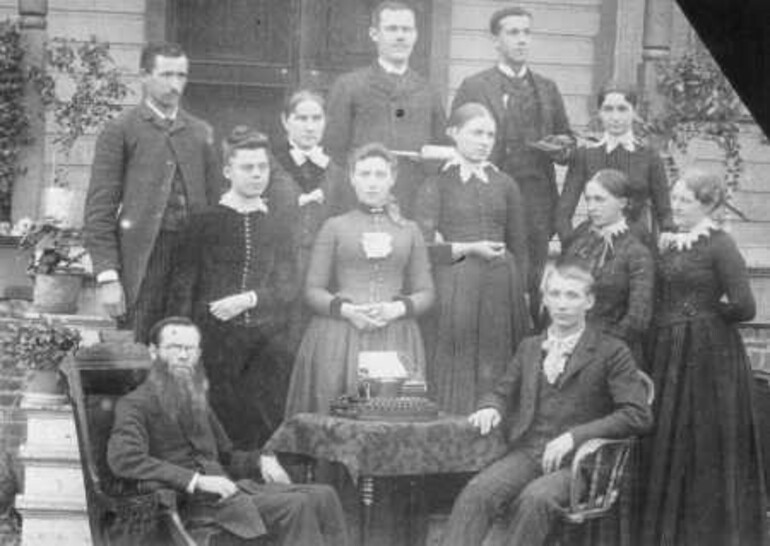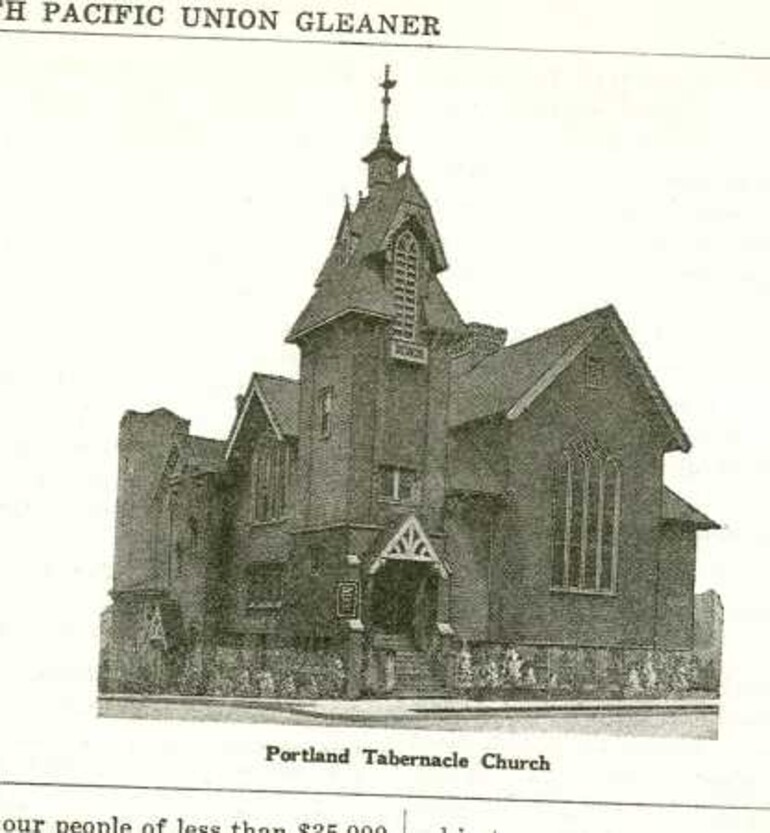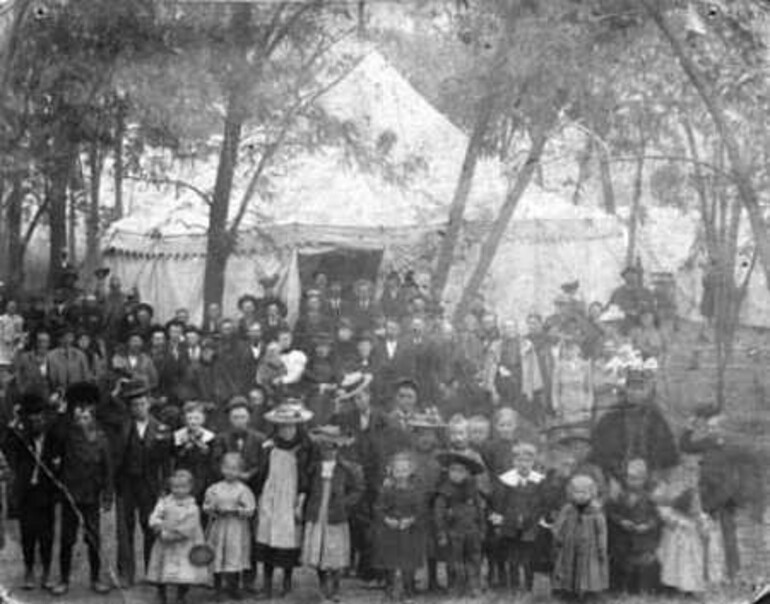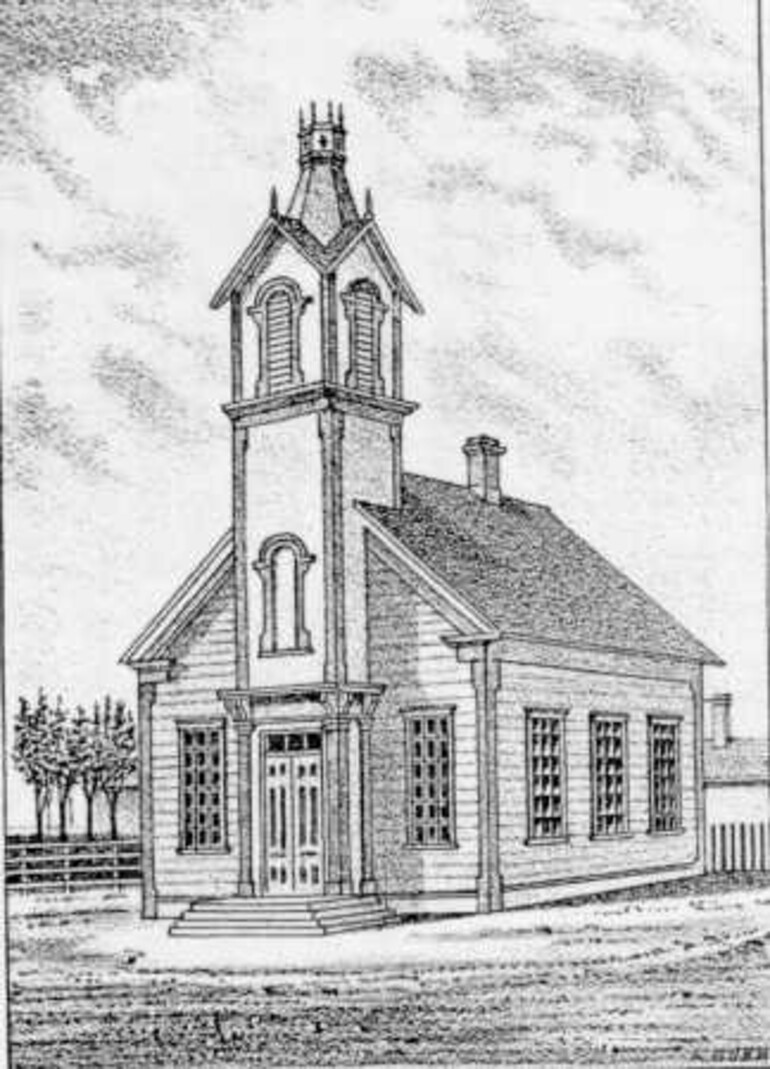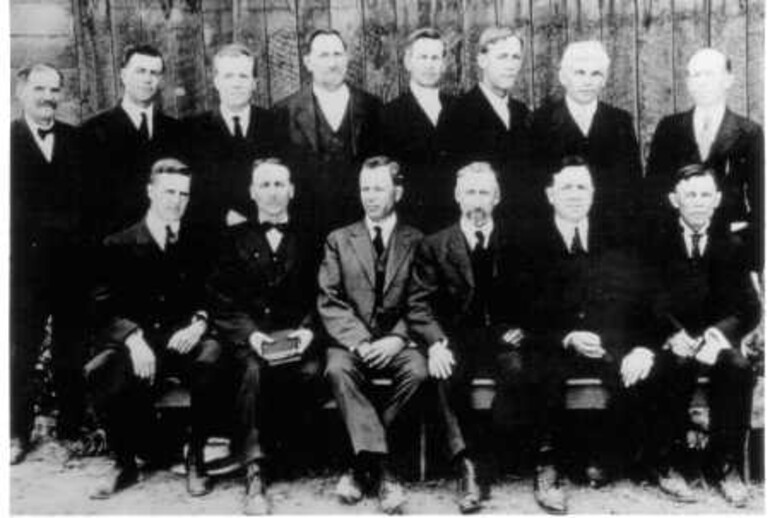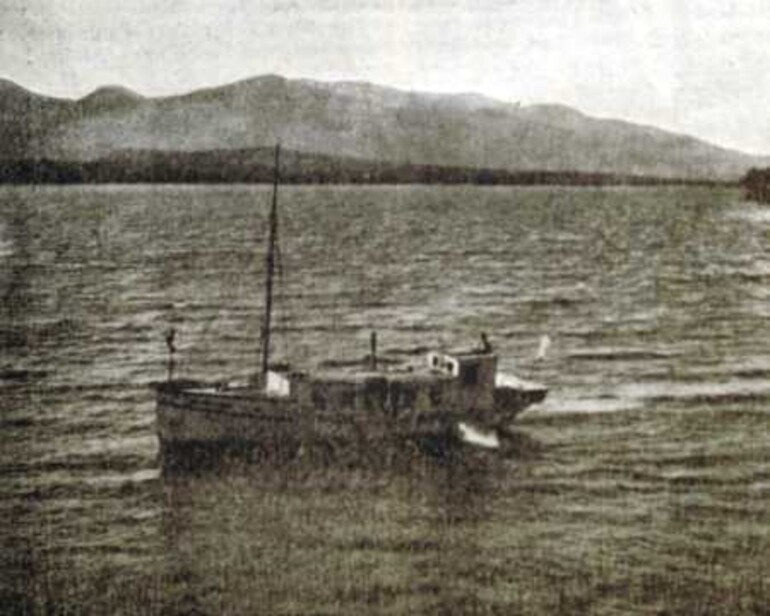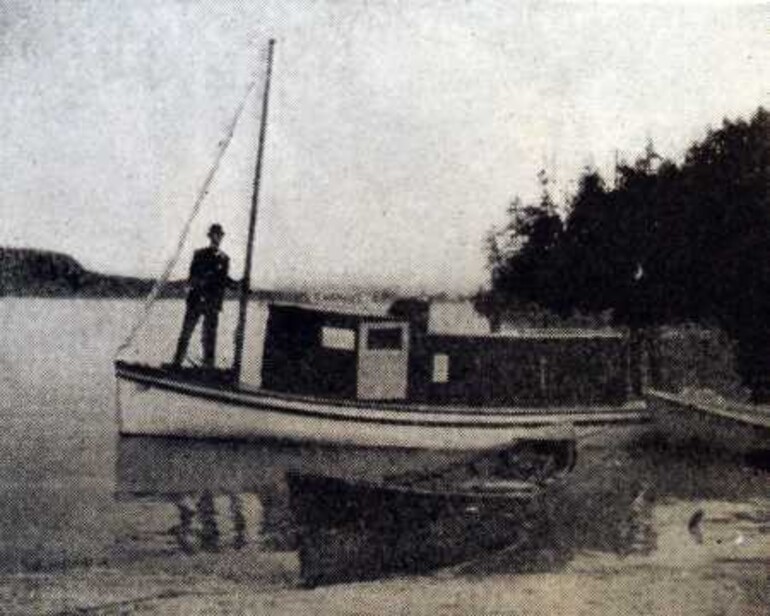How the Flame Was Lit
In its first issue, representing the newly formed North Pacific Union Conference (NPUC) in 1906, the North Pacific Gleaner, as it was then called, shared with its readers a poem titled “Launching of the Gleaner” by F.M. Burg. Here we quote just the first few lines:
Little Bark, launch out;
Ne’er grander cause nor nobler end
Called forth a ship the deep to brave;
In perils dire, with hopes all gone,
Desponding, sinking one by one,
Are myriad souls from stranded ships,
Who, lest some help at once receive,
Must surely find wat’ry grave:
Little Bark, launch out.
What may seem zealous hyperbole to some modern minds most certainly captured the mindset and mission of early Northwest Adventists who, believing time was short, quoted Joel 3 and Revelation 14 on the GLEANER masthead—“Put ye in the sickle, for the harvest is ripe.” They were pilgrims on their way to a better land, and believed that God had commissioned them to hold out the flame of truth to a nation and a world with little probation left.
Yet, to the secular view, 1906 was an auspicious time in American history. The growing nation was emerging from the Industrial Age with a sense of optimism that jobs would be plentiful, food abundant, travel easier and quality of life on the upswing.
Although a horse and buggy were still the normal conveyance, the internal combustion engine had taken a Packard automobile from San Francisco to New York in just 53 days, the Wright brothers had made their first flight at Kitty Hawk, baseball had celebrated the first World Series, ground had been broken on the new Panama Canal, and Albert Einstein had begun formulating the elements to his Theory of Relativity.
But America, for all its promise, faced daunting challenges. The nation was still more rural than urban, with three out of five citizens living in towns of less than 2,500 population, most without electricity. While upper and middle-class Americans began to experience more leisure time, for most, the average workweek was 12 hours a day and six days a week. Thousands of children labored from dawn to dusk in cotton mills and coal mines. Racial inequalities were rampant.
As the calendar turned to 1906, amidst all the progress, disaster also struck around the world, with powerful earthquakes in San Francisco and Chile, and a typhoon in Hong Kong, killing tens of thousands.
During the first decade of the 20th century, “higher criticism” and the theory of evolution were finding acceptance in some Christian circles, with crowds flocking to widely publicized debates. Carrie Nation, six feet tall and ax in hand, fought alongside the Women’s Christian Temperance Union against the abuse of alcohol and the related mistreatment of women.
Such was the dynamic climate into which the North Pacific Union Conference was formed, although one could easily observe that the Northwest “frontier” was at that time a world apart from most of eastern society. Stories of the Wild West and the Oregon Trail were still current history in many parts of the Northwest. That same frontier attitude of independence also characterized many of the early Adventist pioneers.
Adventist work in the Northwest had actually begun decades before 1906. Teachings of the church had migrated west along with the early settlers. Adventist member Augusta Moorhouse came with her family to the Walla Walla Valley in 1861. She introduced the Stephen Maxson family to Adventism, and the process of multiplication began.
In April of 1873, the growing cluster of Adventists formed the First Seventh-day Adventist Church of Walla Walla. In time, they requested ministerial help from the General Conference. When the need was presented in the Review and Herald, enough money was donated to enable the young Adventist denomination of just 7,000 members to send Isaac and Adelia Van Horn as the first “missionaries” to the Northwest. Their trip to Walla Walla is typical of that era of travel: A ship from San Francisco to Portland, Oregon; boat up the Columbia River to Wallula, and then six hours and 30 dust-choked miles to Walla Walla by stagecoach. The Van Horns arrived in time to begin their work early in 1874.
The work quickly spread beyond the Walla Walla Valley. Van Horn and newly converted Alonzo T. Jones traveled to Oregon's Willamette Valley to hold meetings, first in the state’s oldest town, Oregon City, and then in the state capital of Salem. In January of 1877, Van Horn organized a church of 35 members at Salem, the first Adventist church in western Oregon. That year, five churches and six other groups totaling about 200 members within the Oregon and Washington territories were organized into the North Pacific Conference, with Van Horn as president; his wife, Adelia, secretary; and A.T. Jones, treasurer.
In 1880, the portions of Washington and Oregon east of the Cascades, along with all of Idaho were separated from the North Pacific Conference and reorganized as the Upper Columbia Conference. The Advent message moved into the Boise, Idaho, area, where D.T. Fero, in 1885, reported finding two Sabbath Schools in operation. The next year he combined the Sabbath Schools and organized a church.
As the spread of Adventism throughout the Northwest continued, C.L. Boyd held a series of tent meetings in Seattle during 1886, baptizing 10 people in Lake Union. From that beginning, the first western Washington church was organized. First named the North Seattle Church, it relocated as the Seattle Central Church and eventually moved again to become the Volunteer Park Church.
In the central portion of the Montana territory, O.A. Johnson held evangelistic meetings during 1888 just east of Bozeman in Livingston, where there were already four believers. By the end of November, he reported that 26 individuals had signed a covenant to form a church. Just a little over a year later the congregation had built the first church building in Montana. In 1892, the first camp meeting was held in Bozeman, with almost two-thirds of the 125 territory-wide members attending.
Even the Alaskan frontier was opening to Adventist work. During the Klondike gold rush, Jasper N. Sylvester (grandfather of Voice of Prophecy founder H.M.S. Richards) traveled to Alaska in 1898 and handed out tracts far and wide. A.M. Dart and T.H. Watson soon came to the Juneau area as the first official Adventist missionaries.
Responding to the needs of a growing church, the General Conference, in 1901, voted to establish union conferences to allow for more regional coordination and focused support of the church’s mission. Initially the entire group of western states was included in the Pacific Union Conference, including the territories of Alaska and Hawaii and the province of British Columbia. In 1906, delegates met in Portland, Oregon, to approve a new union conference for the Northwest. After an animated and lengthy discussion, the motion carried by 33 to 14 to create a North Pacific Union Conference which included Alaska, Idaho, Montana, Oregon, Washington, British Columbia and Hawaii. The British Columbia territory was redirected into the Western Canadian Union Conference in 1908, and the Hawaiian Mission was placed under General Conference direction in 1909.
By the end of 1906, the newly organized North Pacific Union Conference with William Byington White as president had 145 churches, 20 companies and a total membership of nearly 5,600. A previously published paper called The Educator was replaced by the GLEANER. The four-page weekly GLEANERs often devoted entire pages to detailed canvassing or financial reports to foster unity and accountability with the growing membership. The headquarters for the NPUC were initially located on the campus of Walla Walla College in College Place, Washington.
Throughout the century of progress since 1906, the Northwest church has grown to include 90,000 members in more than 400 churches. Northwest members are a generous lot. In recent years, they have consistently contributed more per capita to the church’s mission in tithes and offerings than any other union in North America. And the pioneer spirit still lives in thousands of Northwest Adventists, young and old, who have traveled the world on short-term evangelistic mission projects.
In some ways, the Northwest Adventist Church of today faces many of the same challenges it did a century ago. It still seeks to walk a line between the extremes of "higher criticism" on one hand and ultra-conservative fundamentalism on the other. It still grapples with issues of evolution and creation, science and faith. The NPUC has evolved over the decades to help a growing church reach out to an increasingly complex world.
The GLEANER continues to provide regular reports of what God is doing in and through Adventist members in the Northwest. The “Little Bark” that was launched in 1906 to encourage and inspire members towards service and evangelism still seeks to hold true to that mission.
Along with the NPUC, the year 1906 birthed such diverse actors on the world's stage as tycoons Aristotle Onassis, John D. Rockefeller III, and gangster Bugsy Siegel; Nazi Adolph Eichmann and theologian Dietrich Bonhoeffer; and musicians “Count” Basie, E. Power Biggs, and Dimitri Shostakovitch. They have passed on, but what they accomplished in their lifetimes lives on for better or worse.
And so it is with our early pioneers. They went to their rest, having passed the torch to other generations, confident that the Second Advent was near, even at the door.
What might those pioneers have thought if they were to know that our homes in 2006 would still have earthly addresses? Stories of missionary zeal still resound from our members who return from trips overseas, building churches by the dozens. Yet over the past five decades, an average of just two churches per year have been established here. It could be more. The Northwest "mission" stands in need of home-grown missionaries, who after their own short-term mission journeys, stand ready to apply Ellen White's reflex influence promise, where she states that, "the prosperity of the home work depends largely, under God, upon the reflex influence of the evangelical work done in countries afar off,"* to the challenge in their own neighborhoods and communities.
Each Northwest member has a God-given mandate to ensure that the flame, kindled well over a century ago by Northwest pioneers, is used to kindle other flames until Jesus comes. Each of us can pray that the next "centennial" will be celebrated, not here, but at home with those pioneers, in a better land.
Information for this article was gleaned from several sources including: www.adventistarchives.org; www.hyperhistory.com; Doug Johnson, Adventism on the Northwestern Frontier, (Berrien Springs, MI: Oronoko Books, 1996); Gary Land, Adventism in America, (Berrien Springs, MI: Andrews University Press, 1998); Seventh-day Adventist Encyclopedia (Washington, DC: Review and Herald Publishing Assoc., 1966); North Pacific Union Gleaner.
